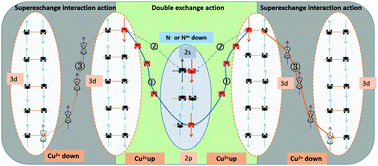Influence of the type of carrier on ferromagnetism in a Si semiconductor implanted with Cu ions
Abstract
Silicon semiconductor samples implanted with Cu ions and samples co-implanted with Cu- and N-ions were prepared by MEVVA and the Kaufman technique. None of the samples showed evidence of secondary phases. The initially n-type Si matrix, when implanted with Cu ions, changed to a p-type semiconductor, and the Cu ions existed as local Cu2+ cations in the p-type environment. As a result, none of the Cu-implanted samples were ferromagnetic at room temperature. The co-implanted samples, on the other hand, showed room-temperature ferromagnetism because the introduction of N ions made the carrier type change from p-type to n-type which is favorable for the appearance of Cu2+. First principles calculations were applied to understand the experimental phenomena. The formation energy was reduced by implanting N ions, and was decreased effectively with the increase in ratio of N to Cu ions. The density of states and spin density of states indicated that the hybridization of s, p and d electrons induced ferromagnetism at 0 K. Particularly, we proposed possible exchange interactions between the Cu2+–N−(N4+)–Cu2+ ions to explain the ferromagnetism mechanism.

- This article is part of the themed collection: 2020 PCCP HOT Articles


 Please wait while we load your content...
Please wait while we load your content...